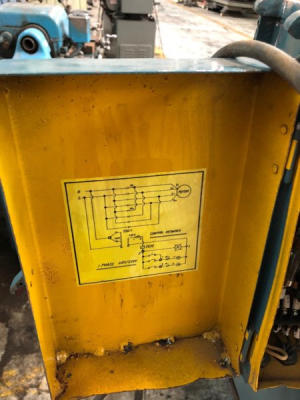- Joined
- Apr 13, 2021
- Messages
- 26
Hello,
First off, let me know if this is the wrong section for this, or maybe I should double post in the Asian Lathes section?
Anyways, I recently acquired a 1984 Crown lathe I am attempting to revive. It seems to be similar to the Honden/Jet lathes of this era. Unfortunately some of the wiring to the magnetic contactors isn’t complete. Would anyone with a similar lathe be willing to upload a picture of their wiring box?
I found a Honden wiring diagram that seems accurate, but I am uncertain which pole controls the coil. The side terminals or maybe 13/14?
Also....in the picture, I labeled the conduits. I'm not sure I understand the role of "C"; it leads to a box under the power feed.
A: 110V in
B: Motor
C: Unknown
D: Power control (emergency stop)



Thanks,
Alex
First off, let me know if this is the wrong section for this, or maybe I should double post in the Asian Lathes section?
Anyways, I recently acquired a 1984 Crown lathe I am attempting to revive. It seems to be similar to the Honden/Jet lathes of this era. Unfortunately some of the wiring to the magnetic contactors isn’t complete. Would anyone with a similar lathe be willing to upload a picture of their wiring box?
I found a Honden wiring diagram that seems accurate, but I am uncertain which pole controls the coil. The side terminals or maybe 13/14?
Also....in the picture, I labeled the conduits. I'm not sure I understand the role of "C"; it leads to a box under the power feed.
A: 110V in
B: Motor
C: Unknown
D: Power control (emergency stop)
Thanks,
Alex




